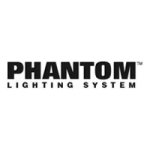
Gallery lighting aims to enhance the overall visual experience within a gallery setting, ensuring optimal visibility, aesthetic appeal, and interpretation of the artworks on display. It employs a multi-faceted approach that encompasses visibility, aesthetics, guidance, preservation, contextualization, and educational impact. The primary goal of art gallery lighting is to ensure that the entire gallery space receives consistent and uniform illumination. Adequate lighting is essential for viewers to appreciate the details, colors, and textures of the artworks. Different artworks may possess unique features, such as textures, colors, or intricate details, that contribute to their artistic value. Beyond providing uniform illumination, gallery lighting highlights and accentuates these key elements to ensure they are noticed and appreciated by viewers. The strategic use of lighting establishes a visual hierarchy through lighting to aid visitors in navigating the space intuitively. This ensures that key artworks or sections receive appropriate emphasis. Proper lighting enables visitors to interpret and understand artworks more effectively by revealing details that are crucial for interpreting the artist's intent.
The challenge of lighting for galleries arises from the need to balance preservation requirements, diverse art collections, changing exhibits, visitor experience, and technological advancements. Preserving the integrity of artworks is a paramount concern in galleries. Light exposure, particularly ultraviolet (UV) and infrared (IR) radiation, can lead to fading and deterioration of artworks over time. Achieving a balance between providing sufficient illumination for viewing and ensuring the preservation of delicate materials poses a significant challenge. Different types of artwork (paintings, sculptures, photographs, etc.) may have specific lighting requirements based on their materials, colors, and intended viewing conditions. Designing a lighting system that caters to the diverse nature of a gallery's collection is a complex task. Achieving accurate color representation is crucial in gallery lighting. Artworks are often created with specific color palettes, and any deviation in color rendering can distort the artist's intent. Gallery lighting systems need to faithfully reproduce colors without compromising preservation. Galleries typically showcase a variety of artworks, each with its own unique features and details. Directional and focused illumination must be delivered to highlight specific pieces while maintaining a cohesive overall ambiance requires careful planning. Striking a balance between the need for preservation and providing an engaging and visually appealing experience for visitors is a challenge. Gallery lighting should enhance the viewing experience without causing discomfort or distraction. Like any lighting design, energy efficiency is a consideration in galleries. Balancing the need for high-quality lighting with energy conservation adds complexity to the design process.
The uniqueness of art gallery lighting lies in its specialized focus on art, precision in achieving optimal visual conditions, adaptability for changing exhibits, and a commitment to preserving the artworks on display. Unlike general ambient lighting in everyday spaces, gallery lighting is tailored to highlight the details, colors, and textures of each piece, drawing attention to the artistic elements. Galleries prioritize color accuracy to ensure that the lighting accurately represents the colors intended by the artist. Artists carefully choose and apply colors to convey specific emotions, meanings, or visual experiences in their creations. Maintaining color accuracy is essential to preserve the artist's original intent and the visual impact of the artwork. Gallery lighting aims to minimize glare and shadows that can obstruct the viewer's experience. This is achieved through strategic placement of lights, careful control of intensity, and the use of anti-glare fixtures. Galleries frequently host changing exhibits, requiring a lighting setup that is adaptable to different types of artworks. Flexible lighting systems, such as track lighting, allow curators to easily reposition lights to accommodate new displays. Gallery lighting involves a high level of technical precision. Designers carefully calculate the appropriate lighting levels, angles, and positions to ensure uniform illumination and an aesthetically pleasing display. The architectural design of galleries is often taken into account when planning lighting. Gallery lighting should complement the architectural elements and enhance the overall visual appeal of the space.
LED technology has become a central and indispensable element in illuminating art galleries. The energy efficiency of LED lights brings about tangible cost savings for galleries. LED lights have a significantly longer lifespan compared to traditional light sources, which translates to reduced maintenance needs. The compact size of LED fixtures and their versatility in design allow galleries to integrate lighting seamlessly into architectural elements and displays. This design flexibility ensures that the lighting complements the aesthetics of the gallery space without detracting from the artworks. LEDs emit negligible amounts of ultraviolet (UV) radiation. This is essential for galleries as UV exposure can be harmful to artworks over time. LED lights emit very little heat, which is crucial in gallery settings to prevent heat damage to delicate artworks. By manipulating the spectral power distribution (SPD), LED lights can faithfully represent the colors intended by the artist and deliver white light in the most appropriate color temperature, contributing to a more authentic and impactful engagement with the exhibited artworks. LED lights provide instantaneous illumination without warm-up time, allowing galleries to control lighting precisely and respond quickly to changing requirements or events. LED lights can be easily dimmed, providing galleries with the flexibility to adjust lighting levels according to the specific requirements of different exhibitions, events, or times of the day. Dimming capabilities enhance adaptability and contribute to the overall atmosphere of the gallery. LED technology allows for dynamic lighting effects and programmable sequences. Galleries can utilize this feature to create unique atmospheres during special events or exhibitions, adding a dynamic and interactive dimension to the gallery experience.
LED gallery lights come in various types, each designed to fulfill the specific requirements of the art gallery, the type of artworks on display, and the desired lighting effects. LED track lights consist of adjustable fixtures mounted on a track. This design allows for flexibility in directing light precisely onto artworks. Recessed LED spotlights are installed within the ceiling, creating a clean and streamlined appearance. They provide focused illumination without protruding into the gallery space. Adjustable LED spotlights are fixtures with a directional beam that can be focused on specific artworks. They often come with adjustable heads for precise aiming. Framing projectors are specialized fixtures designed to project light precisely onto artworks, creating a controlled and defined illumination. Linear LED fixtures are long, narrow lights that can be mounted on walls or ceilings. They provide a linear spread of light, often used for wall washing or emphasizing architectural features. Surface-mounted fixtures are installed directly onto the ceiling or wall. They can come in various styles, including LED spotlights, LED downlights, and linear fixtures. LED picture lights are fixtures designed to illuminate individual artworks, especially paintings or photographs. They are often mounted on the wall above or below the artwork. Picture lights are commonly used for lighting paintings, photographs, or other framed artworks without causing unwanted reflections. Wireless LED picture lights are battery-operated or rechargeable fixtures that can be easily attached to artworks without the need for wiring.















